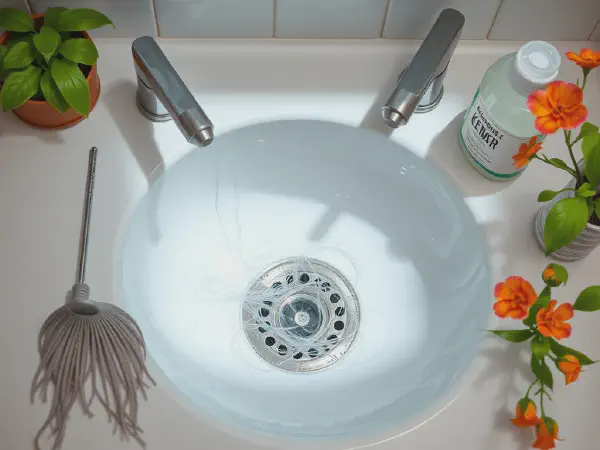Expert Tips on How to Prevent Hair Clogs in Your Drain

Preventing Hair Clogs in Drains
Preventing hair clogs in drains is essential for maintaining a functional plumbing system in your home. Hair is one of the leading culprits behind clogged drains in bathrooms and kitchens, and it can lead to water backflow, unpleasant odors, and costly repairs. By adopting effective strategies and preventative measures, homeowners can significantly reduce the risk of hair-related clogs in their drainage systems.
To effectively prevent hair clogs in drains, it is crucial to understand how hair accumulates and what measures can stop it from entering the drain in the first place. Simple practices like using drain covers, performing regular cleaning, and employing appropriate hair removal techniques can greatly keep your drains clear. Moreover, understanding your drainage system's layout should enable you to take proactive steps in preventing blockages.
In addition to preventative measures, regular drainage maintenance and timely intervention when issues arise are key to effectively managing hair clogs. Homeowners should be educated about the various methods for cleaning and maintaining drains proactively so they can avoid the inconveniences associated with clogged plumbing. Overall, preventing hair clogs in drains requires a combination of good habits, regular maintenance, and awareness of potential problems.
For homeowners, implementing strategies for preventing hair clogs in drains is not just about addressing the symptoms but also the root causes. By choosing appropriate tools, recognizing the signs of a problem, and maintaining a clean and functional drainage system, they can help ensure that their home remains free of frustrating clogs. This proactive approach will safeguard plumbing performance and preserve the overall health of the home’s drainage system.
In conclusion, preventing hair clogs in drains is a manageable task that requires consistent effort and the right techniques. By understanding the common causes of hair clogs and adopting preventive measures, homeowners can maintain their drainage systems, save on repair costs, and enjoy a more efficient plumbing experience.
Effective Drain Covers
One of the simplest methods for preventing hair clogs in drains is the use of effective drain covers. There are several types of drain covers available, including mesh screens, silicone drain protectors, and solid covers with openings designed to keep hair from entering while allowing water to flow freely. Each type has its advantages, and selecting the right one for your specific needs will help minimize hair-related clogs.
When choosing a drain cover, it is essential to consider factors such as size, material, and design. The cover should fit securely over the drain and be made from durable materials that can withstand regular use and cleaning. Opt for a design that allows for easy removal and cleaning, ensuring that you can maintain it regularly to achieve the best results in preventing hair clogs.
Maintaining and cleaning drain covers effectively is crucial for their performance. Regularly inspect the cover for buildup of hair and debris, and clean it as needed—ideally after each shower or bath. Use warm, soapy water to remove any residue, and consider using a small brush to get rid of tough clogs. A well-maintained drain cover will provide an invaluable first line of defense against hair clogs in drains.
Regular Drain Cleaning
Best practices for regular drain cleaning include establishing a routine cleaning schedule and using appropriate cleaning products. Homeowners should aim to clean their drains at least once a month, using a mixture of baking soda and vinegar to promote a healthy flow. This combination not only keeps drains clear but also neutralizes odors that may arise from stagnant water.
DIY drain cleaning methods can be simple and effective in managing hair accumulation. To create a homemade drain cleaner, combine a half-cup of baking soda with a half-cup of vinegar, pour it down the drain, and let it sit for 30 minutes before flushing it with hot water. This method can help dissolve minor clogs due to hair and other residues without the need for harsh chemicals.
When to call a professional for drain cleaning can often be determined by the severity of the blockage. If you notice persistent slow drainage, unpleasant odors, or recurring clogs despite regular cleaning, it's time to consult a plumbing professional. They can use specialized equipment to address more serious issues that may be beyond DIY solutions.
Hair Removal Techniques
Tools for removing hair from drains include specialized drain snakes, hair catchers, and plumbing augers. These tools are designed to dislodge hair clogs quickly and effectively, minimizing the need for invasive plumbing methods. Keep these tools easily accessible, and consider using them regularly to ensure drains remain free from hair buildup.
Best practices for hair collection while showering involve incorporating simple habits that minimize hair loss down the drain. For example, brushing your hair before showering can capture loose strands and keep them from washing away. Additionally, using a hair catcher in your shower or bathtub can help collect hair before it enters the drain.
How often to check and remove hair from drains should ideally be done after every shower or bath. Creating the habit of checking drain covers and ensuring that hair is removed will prevent clogs from forming and keep your drains flowing freely.
Preventive Maintenance Tips
How to establish a regular maintenance routine for your drains involves scheduling monthly checks and cleanings, alongside periodic assessments of your plumbing system. Include family members in this routine to share responsibility and promote awareness about drain care. By being proactive, you can ensure consistent drain performance in your home.
Signs that your drain is clogged include slow drainage, gurgling noises, and unpleasant odors emanating from the drain. Should you notice any of these indicators, it's important to take action quickly to prevent more significant issues from arising.
Products to use for drain maintenance include enzymatic cleaners and natural degreasers that are safe for plumbing systems. These products can break down organic material without damaging pipes, helping to keep hair and other residues from accumulating and causing clogs.
Understanding Drainage Systems
How your home's drainage system works is essential to maintaining it effectively. Water from sinks, showers, and bathtubs flows through pipes connected to the municipal sewer system or a septic tank. Understanding this flow can help you identify potential problem areas and ensure proper drainage.
Common causes of drain clogs include hair accumulation, grease buildup, and foreign objects inadvertently washed down the drain. Regular monitoring and proactive measures can mitigate these common issues and ensure efficient drainage.
The role of plumbing in preventing clogs is vital; a well-designed and properly maintained plumbing system will minimize the chances of hair clogs and other blockages. This means employing best practices for plumbing maintenance, including checking for leaks and ensuring proper venting in drains.
